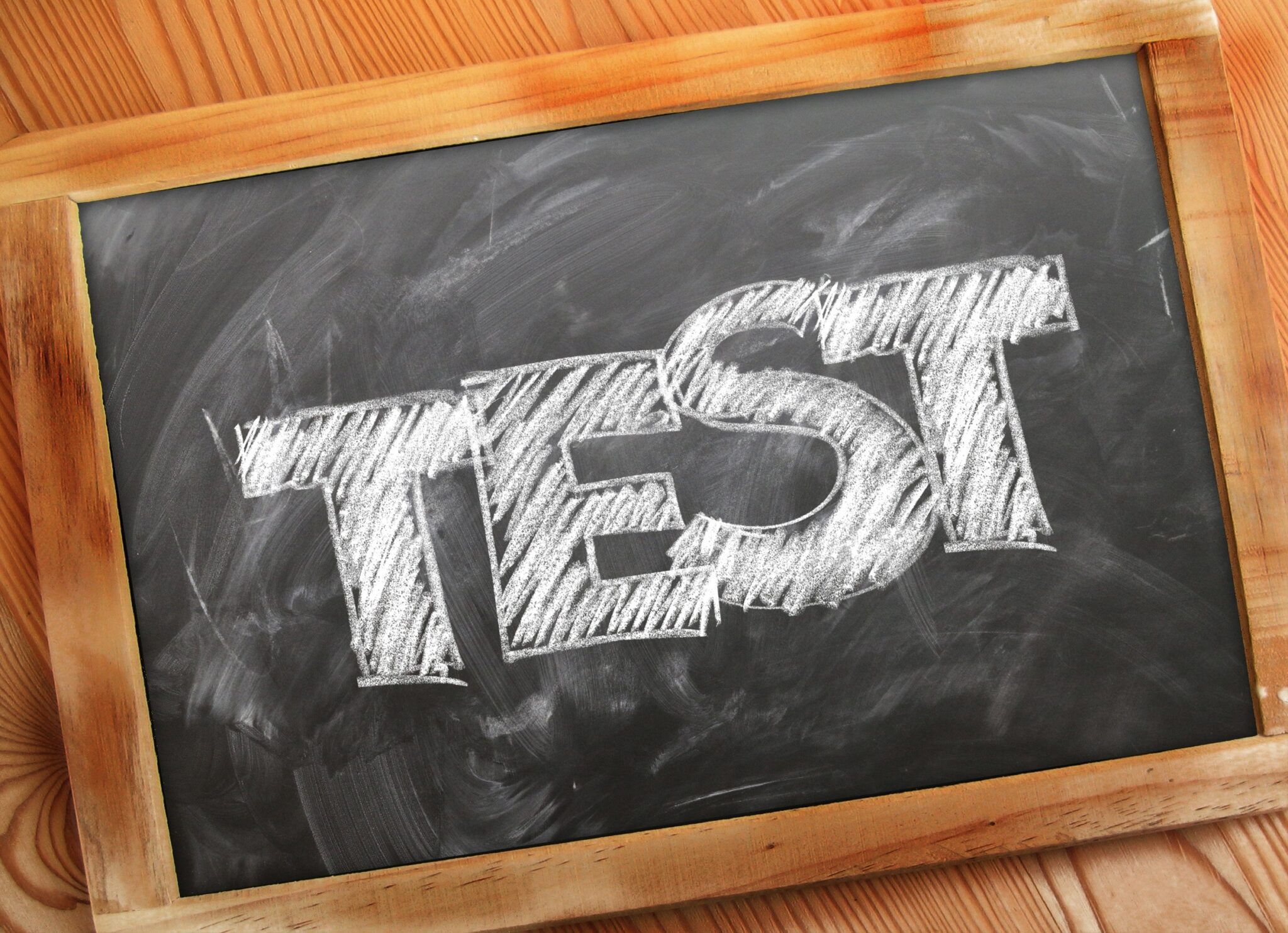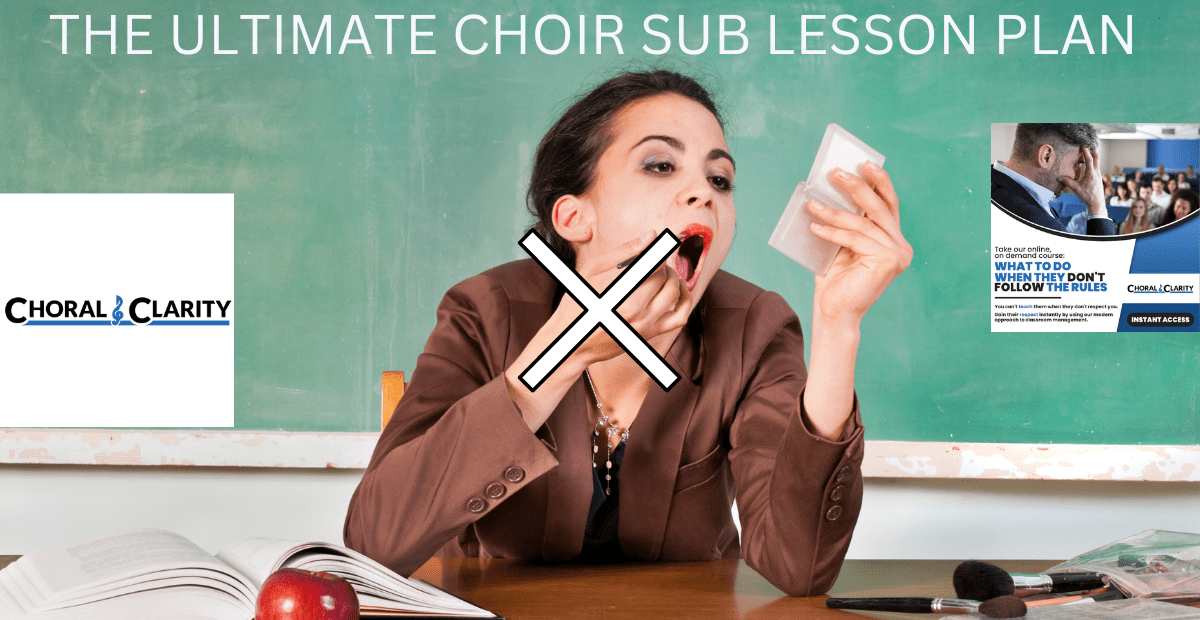The two main components of any successful rehearsal are the planning/execution of the director and the planning/execution of the students. Many of us write detailed rehearsal plans and focus our energy on keeping the rehearsal engaging, but what do we do to involve our students in their preparation?
Successful rehearsal participation will occur when students consistently exhibit a series of specific and tangible skills. Every student is capable of exhibiting successful rehearsal participation. If we intend to have productive, engaging, and flowing rehearsals, the overwhelming majority of our students must exhibit the majority of these tangible rehearsal participation skills for a majority of the time.
In order to teach our students how to exhibit successful rehearsal participation skills, we first must know exactly what actions constitute effective participation within our rehearsal; once we are clear on these specific skills, we must be intentional on continually communicating these expectations to our students; finally, we must be able to motivate our students to become the best versions of themselves by gaining consistency with these skills. I believe one key factor toward seeing tangible growth in rehearsal participation comes from self-assessment.
Creating a Self-Assessment Participation Rubric
A self-assessment participation rubric is a tool that lists tangible skills and requires the students to self-assess their own procifiency level of those skills. Once they become self-aware of their role in the rehearsal and learn to successfully evaluate their achievement level, they will then gain a new tool to become better rehearsal participants in a more tangible way.
We often think about our entire choir when envisioning a rehearsal, but it’s each individual that makes their own decision of how they are going to respond throughout a rehearsal.
Here is your assignment:
Close your eyes and envision what an ideal rehearsal looks like. Now zoom into each individual student, one by one. If you had a video camera that was focused on each individual singer and silently recorded their actions for an entire rehearsal, what would we see?
As the camera focuses on each student as they enter the room and stays with them until the closing bell, here are some examples of tangible actions that would be witnessed:
Self-Assessment Rehearsal Participation Rubric(s)
- How they enter the classroom
- When they reach their seat in conjunction with the class beginning
- How and when they begin the warm-up
- How quickly they respond to directions given
- How they choose to stand when singing
- How they choose to sit when singing
- How they choose to hold their music
- When they use their pencil to make markings
- When they make eye contact with us
- When they look down or around the room, possibly at neighbors
- What they do whenever we stop an activity
- When and why they interact with other students
Once we layout a list of tangible actions and/or skills, we can now hone in on what is the ideal action for each skill; when we have such clarity, we will have completed the first step in the process. There is no standard ideal for many of these skills; it’s up to the director to envision precisely what actions they expect for their singers.
Teaching and reinforcing these skills is an important second step to developing these rehearsal skills/actions; while reinforcement of rehearsal culture is an important aspect of the equation, there is another element that is frequently overlooked: teaching students how to hold themselves accountable for their own actions and skill development. Students must learn how to self-assess their own rehearsal performance.
The Importance of a well-constructed Self-Assessment tool
I do not believe we should use self-assessments to punish students; we should not used them to catch students doing the wrong thing, or to prove they are poor students.
Well-constructed self-assessments can be a vehicle to show students that any skill or action has a range of success; they are not “all or nothing”. As a result, everyone fits on that scale and students rarely place at the lowest level. By giving each student awareness of their current level, they can see that there are some things they do better than others; it also shows them what the next level of achievement would be, which usually doesn’t require much work.
In the self-assessment participation rubric I use, there are 5 levels of achievement for each skill/action: “always”, “most of the time”, “some of the time”, “occasionally”, “almost never”. By having 5 levels, students have the ability to understand whether they truly have achieved the expected level while showing the less successful students that they aren’t as far away from achievement as they think they are.
Try SIGHT READING FACTORY and save 10% using code: choralclarity
Presenting the self-assessment participation rubric
How you present a well-constructed self-assessment will determine how well it is received by your students and how impactful it will become.
It is our job to explain the self-assessment rubric line by line with our singers. By doing so, we can direct them to understand the choices that constitute the different levels for each action/skill. Here is an example of a skill and how I would discuss it:
Example of a Self-Assessed Skill: “Holding up your music”
Options for self-evaluation: “always”, “most of the time”, “some of the time”, “occasionally”, “almost never”
“This is what it looks like to hold up your music when you are singing (I would give a demonstration). Do you hold your music this way all of the time or do you catch yourself with your music down and then remember on your own to lift it up? Whenever you catch yourself with your music down and make that adjustment, you are doing a great job in gaining awareness, but that should not be marked as ‘always’. That would be considered ‘most of the time’. How often do you need to be reminded to hold up your music? It’s great that you are following directions when I ask you to raise your music; that is considered ‘some of the time’ because if I didn’t remind you, you would likely not be holding up your music. I view ‘occasionally’ as you not only rarely remembering to hold up your music, but when I remind you to do so, you are sometimes defiant and refuse to do so; if you circle ‘almost never’, it is clear you do not want to develop this skill, nor are you willing to follow directions.”
Note: While this process may appear tedious to you and to some of your students, it should only take around 10 minutes to complete. Have your students fill out each line while you are speaking them and addressing each action. Your students should complete the self-assessment as you are finished speaking about the self-assessment.
Sight-Singing Developmental Rubric – for developing students who lack underlying sight-singing skills
Scoring & Grading a Self-Assessment (for both the student and the teacher)
A self-assessments should have an overall final self-assessment grade and it should have an academic value/weight; with that said, there are a few important things to mention:
- The overall self-assessment grade should represent an overall understanding of how well a student rehearses. We want most students to score well while still being able to be honest about each specific skill or action. Even great students can have deficiencies in their rehearsal participation. A positive contributor to the rehearsal can still have poor posture, not hold their music properly, or not effectively mark their music; what’s most important is that they gain self-awareness of their deficiency. By encouraging honesty and fostering awareness, we can motivate them to want to improve their weaknesses. At the same time, an average or below-average student should see that their score will still be reasonable, so long as they aren’t defiant or intentionally out to be destructive. They will see that small changes can make a big difference.
- We can override their score. If we feel they are hard on themselves, we can choose to give them a higher grade. If we feel they are grading themselves too lightly, we should adjust their grade AND meet with them to discuss the discrepancy between our expectations and how they view their rehearsal performance.
- Grading should be super-easy for us. With a self-assessment, the final score should have the same concept as each expectation: in the case of my self-participation assessment it is “always”, “most of the time”, “some of the time”, “occasionally”, “almost never”. The students circle the OVERALL score that is most consistent with their category scores. In terms of grading application, it amounts to a score of 5,4,3,2,1 or if out of 10: 10,9,8,7,6.
Self-Assessment Rehearsal Participation Rubric(s)
Frequency of self-assessment
Self-awareness will lead to self-motivation if students experience success. When students can pride themselves in their own progress, they will pick up steam and want to work even harder.
Progress happens through consistency. I recommend using a self-participation rubric at the very least once every 10 weeks. I personally use it every 5 weeks, but using it on the last day of every month could be super-effective. Keep in mind the more frequently you do this, the less you will have to say, the quicker the students fill it out, and the less time that will be spent.
Perfect Star-Spangled Banner Arrangement for SAB (SATB) – easy to learn!
I use a self-assessment rubric for regular rehearsals, a different one for pre-concert rehearsals when students are off-book, one to evaluate their concert participation, one for solo performance, and weekly voice classes. All of these rubrics are slightly different in their layout/grading scale and are used either once or twice per 10 week period; I modify my rubrics based on the needs of my ensemble.
I made these self-assessments are available both in PDF form and as an editable document; as a result, you can adjust each sefl-assessment to fit your needs, even between ensembles. I created a bundle for all self-assessments that allows you to make unlimited duplication for your ensemble.
Don’t Use Rubrics Unless Everyone Can Succeed
Do We Need to Self-Assessment for Frequently?
If you wish to self-assessment more frequently, I suggest a slightly modified approach.
The reason for assessing or self-assessing more frequently would be to help students to gain awareness more frequently. With that said, I suggest minimizing the specific actions that your students will be self-assessing. Here are the actions I choose to focus on:
-being on time, and prepared today.
-remaining focused throughout the entire rehearsal.
-exhibiting proper body alignment, including holding my music properly, throughout the rehearsal.
-consistently made markings in my music.
By stripping down the long-term self-assessment, I believe students will be able to quickly assess daily and therefore hold themselves accountable on a daily basis.
Final Words
While self-assessments are immensely useful in helping our students to take ownership for their own growth, they can also be used as a grading tool for us; in other words, we can use the same rubric to grade our students. I’ve created a grading system on each rubric to encourage honest, yet non-discouraging, feedback.













This is very helpful! I have had a difficult time getting some students to understand that I want them to work at MY level of expectation. This breaks it down into easy to understand steps. I’m going to try this out second semester. Thanks!
I’m so glad it was helpful!